Maybe it’s because I grew up near the U.S./Canadian border in Buffalo, but I’ve always been fascinated by currency exchange rates. It didn’t take me long to realize that when my family ventured up to the Muskoka Lakes Country north of Toronto for a vacation, or a few years later when I started driving across the Peace Bridge to play layouts like Stanley Thompson’s Whirlpool Golf Course on the Niagara Peninsula, the actual costs of the green fees and everything else depended on the strength of the dollar compared to the Canadian loonie.
From what I remember of the 1970s, the values of the two currencies were generally pretty equal or within a handful of cents of each other. I sensed the pride of Canadians when the loonie reached its high point in 1974 against the dollar ($1.04 USD). A couple of years later, however, as threats mounted that Quebec might secede from Canada, the loonie fell precipitously. When the Canadian dollar was weak, my Canadian friends complained bitterly about how expensive it was for them to come to the U.S. Hoping to douse the sorrows of these friendly neighbors, a few prominent Buffalo-area bars started advertising that they accepted Canadian currency at par. The queue lines at those bars stretched for blocks.
The Canadian dollar’s downward spiral lasted until 2002, when the loonie plunged to a record low of $.62 USD. You can imagine what a bonanza it was for Americans to cross the border into Canada. I began getting assignments for more exotic Canadian golf trips, including Banff and Prince Edward Island, and Golf Odyssey subscribers inundated us with travel questions about Canadian destinations. Since I was left-handed, I even started going to Canada to buy golf clubs because the selection was better (due to hockey, about half of male Canadian golfers play left-handed) and the exchange rate offset the somewhat higher prices charged.
After 2002, the Canadian dollar began an ascent. The loonie was worth .90 USD in 2006 and it continued to climb until the fall of 2007, when it closed at an all-time high of $1.08. During this period, Canadians flocked across the border to shop. To try to quell the stampede, Walmart even announced that it would sell goods at American prices in its Canadian stores. A brief dramatic reversal occurred in 2008-2009 when $1 USD was worth $1.20 CAD, but in the summer of 2011 the loonie was again worth about 3 cents more than the US dollar.
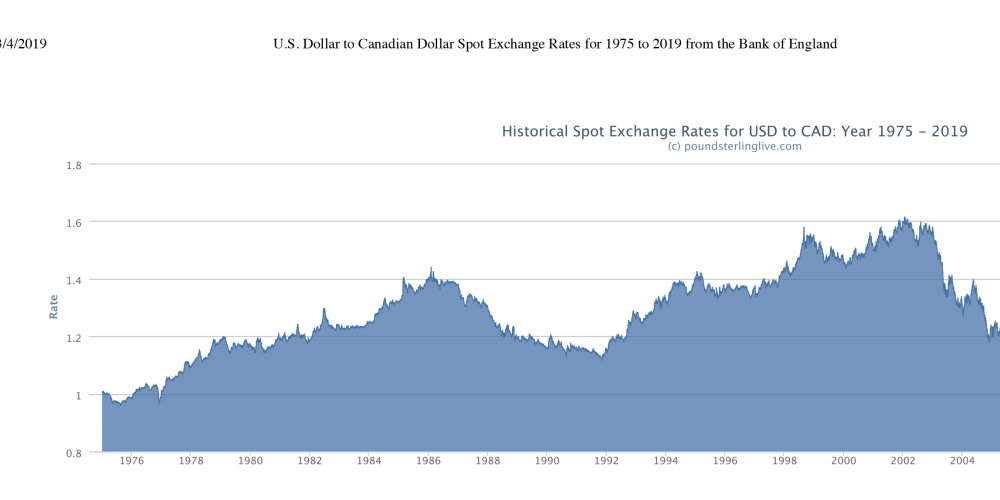
Since then, however, the tide has swung decidedly to the dollar. At the end of February, $1 USD was worth $1.31 CAD. So if you are looking for an international destination, a visit to Canada is currently a great bargain. With so many stellar golf getaways beckoning—Cabot Links, Niagara Falls, PEI, Whistler, Banff, Jasper Park Lodge, British Columbia’s Okanagan region, Muskoka, and more—this is no time to dawdle.
Brexit and the British pound
When I first started paying attention to the British pound on a summer college backpacking trip in 1980, my timing was bad, as the pound was worth $2.40 USD. Had I returned in five years, I would have been golden. Anyone who traveled in the summer of 1985 had a field day, as Reaganomics propped up the dollar and the British Pound briefly dropped to a stunningly low value of $1.10 USD.
That was short-lived, however. When Golf Odyssey first began publishing in the 1990s and our editors made their initial journeys across the pond to Scotland and the British Isles, the British pound fluctuated between a relatively narrow range of $1.50-1.66 USD. When Broadway Books published our 1997 guidebook, we reported that the green fee for a round on St. Andrews’ Old Course was £70, or $114 USD. Trips soon got much more expensive, as the value of the pound climbed steadily from 2001 to 2007 to surpass $2.00 USD.

Since then, however, the British pound’s valleys have far outweighed the peaks, creating a prolonged boom time for US visitors traveling to Scotland and throughout the British Isles. In 2016, as the implications of Brexit weighed on the world’s currencies, the pound dropped to a low of just $1.22 USD.
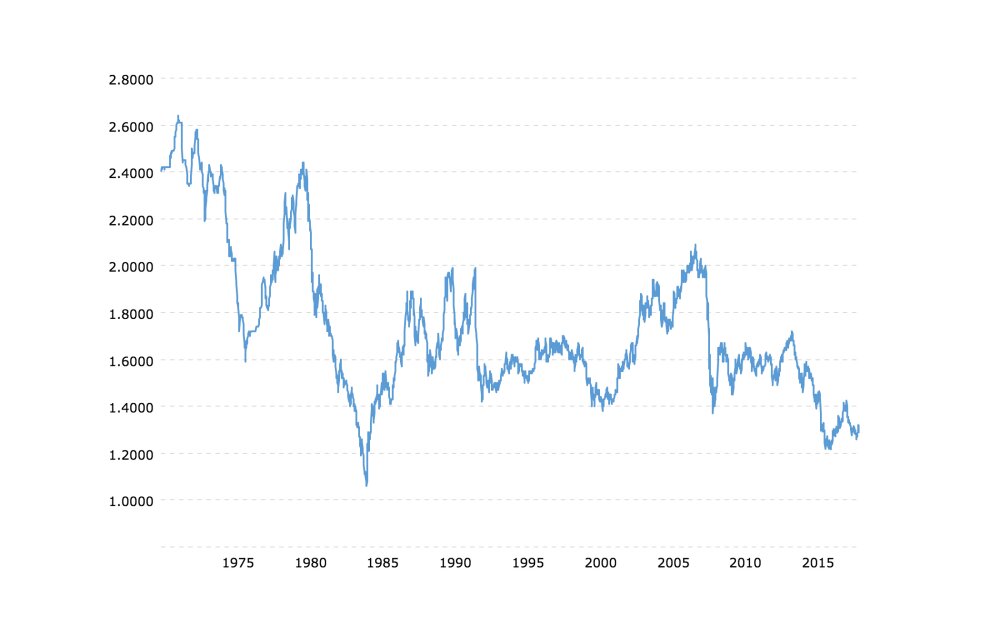
In the current climate, the prospect of a prolonged delay of Brexit has actually led the pound to gain in value again the dollar. At press time, the pound was at a recent high against the dollar (£1= $1.33 USD). Historically, that’s a rate that’s still pretty good for U.S. travelers.
Now for the bad news compared to our 1997 guidebook. If you can get a peak season tee time on the Old Course this year, the green fee is £184 ($245 USD).
Euro weakness a boon for Americans
Are you contemplating a trip to Ireland or Europe? The euro, which is used on the European continent and in Ireland, didn’t exist in Golf Odyssey’s early days. When euro notes and coins first began circulating in 2002, the dollar was actually worth slightly more than the euro (€1= .95 USD). Over the ensuing six years, as the US debt mounted, the euro climbed steadily, reaching a high in 2007 of $1.47 USD. Luxury trips to Europe and Ireland were among the most expensive a traveling golfer could take. A check of Golf Odyssey issues from 2007 shows that the green fee at Lahinch topped out at €155 that year, while in France, the top rate at Evian Resort Golf Club, home to what is now the LPGA’s fifth major, was €100.
In 2008, the financial crisis started in the US before spreading globally. The ripple effect sent the euro somewhat lower, but fears of the US debt crisis kept the rate at $1.28 or higher until 2014. Since then, factors such as recession and governmental crises in Eurozone countries, along with various types of attacks, Brexit and other threats to overall confidence on the continent have pushed the euro down to its current $1.14 USD value.
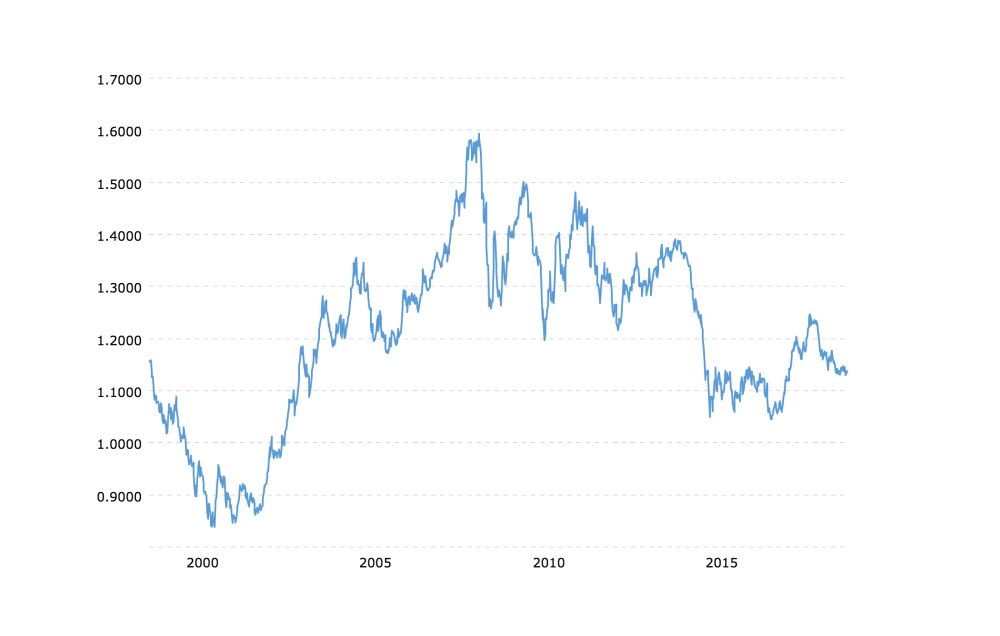
Most experts expect the euro to remain in a weak position compared to the dollar. A look at green fee rates shows that a round at Lahinch this year costs €230. By any standard, Ireland is still an expensive destination. On the other hand, peak summer rates for Evian Golf Club this year are €115. If predictions for the exchange rate hold true, the effective green fee paid by a US visitor in 2019 will be noticeably less than it was in 2007.

Currency troubles in South Africa

One of the most intriguing destinations we’ve featured in Golf Odyssey is South Africa. Combining the game with wine-tasting, explorations of fascinating, multicultural Cape Town, touring the Garden Route and, most of all, safari, makes this country one of the most exhilarating for excursions with and without golf clubs. Before I started working for Golf Odyssey, I lived in Durban for two years. It was the mid-1990s, right after Nelson Mandela got elected, and the exchange rate stayed pretty stable at around 4 rand (ZAR) to the dollar.
The rand has been on a steep slide in recent years. During the South African summer of 2001, uncertainty about the leadership of Mandela’s successor, controversial land reforms in Zimbabwe and the global impact of the 9/11 attacks saw the value of the currency depreciate to the point where 13 rand equaled one U.S. dollar.
Despite some impressive rallies between 2003 and 2007 that temporarily brought the exchange back to $1 USD = 6 or 7 ZAR, precipitous declines, brought on by factors such as South Africa’s trade debt and political turmoil, have carried the day. With the current exchange rate of $1 USD = 14.20 ZAR, this is a great time to visit this sublimely beautiful country and play layouts such as The Links at Fancourt (site of the 2003 Presidents Cup), the Augusta-like Leopard Creek Golf Club, and Cape Town-area courses such as Pearl Valley and Arabella Golf Club.
Friendly down under
Australia is an interesting case study as well. Golf Odyssey’s initial expeditions down under began in 1997, the beginning of the best stretch ever for the American dollar against the Australian dollar. That year, our editors played Royal Melbourne for $200 AUD. At the start of 1997, the Aussie dollar was worth .80 USD, and when it bottomed out in September 2001, it was only worth .49 USD. Over the next decade (with the exception of 2008 and 2009), the Australian buck climbed steadily and dramatically against the U.S. dollar, reaching a high of $1.08 USD in July 2011. Since then, however, the American dollar has rebounded nicely.
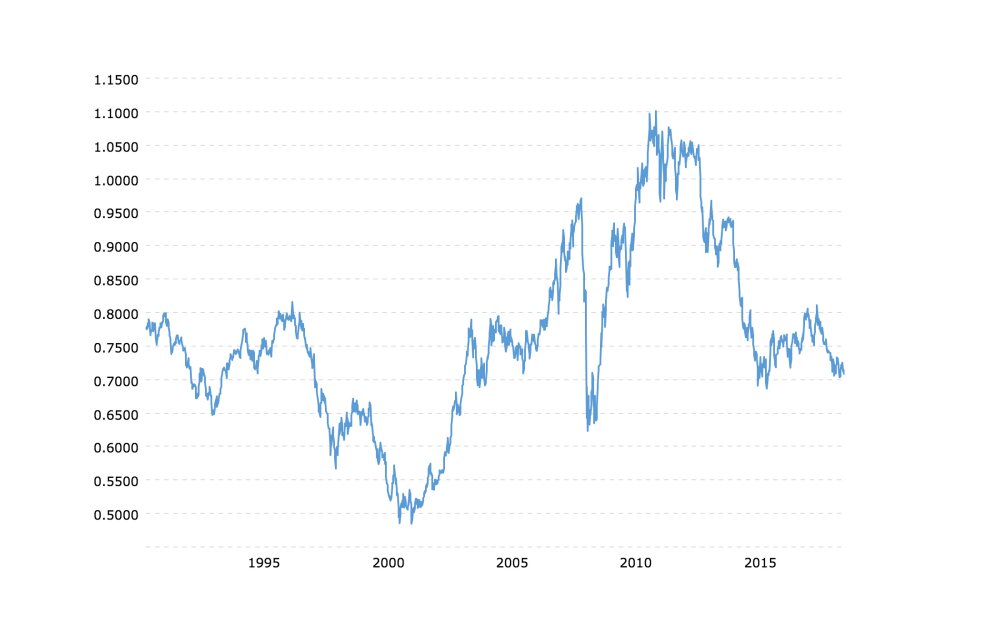
The upcoming 2019 Presidents Cup seems well-timed for American visitors. If you are planning on going to Australia this year, the current rate of $.71 looks quite inviting. But a word of warning: spectating may be more enjoyable than the sticker shock you’ll experience if you’re fortunate enough to get a tee time at Royal Melbourne. The private club welcomes limited play by international visitors on Mondays, Tuesday and Fridays. The current guest green fee is $550AUD ($390 USD).
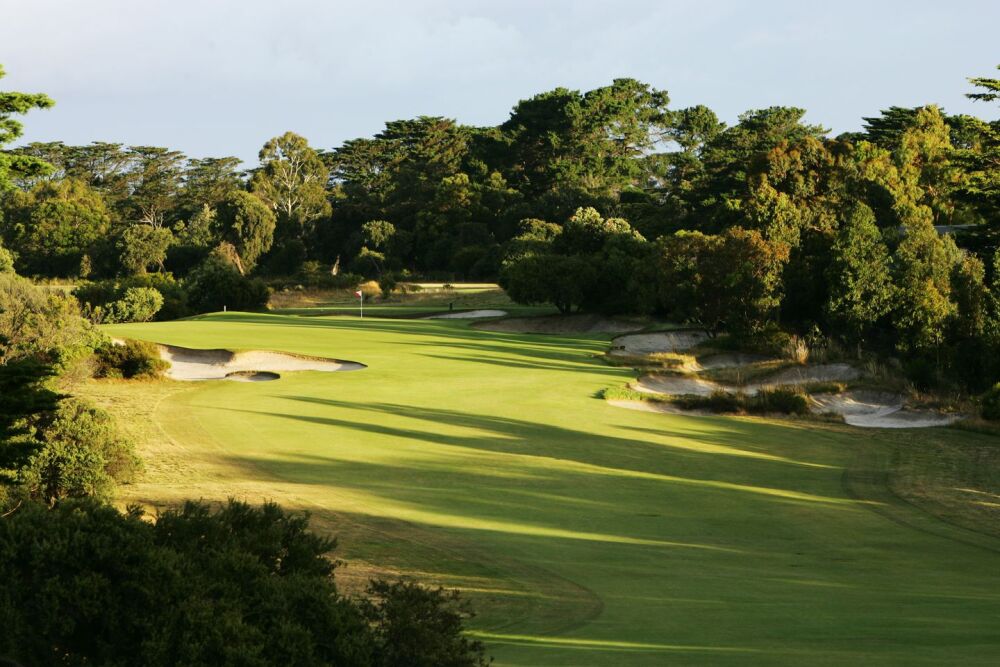
Foreign exchange (or lack thereof) in the Caribbean
Many international golf resorts opt to eliminate consideration of exchange rates by quoting all prices in U.S. dollars. Popular golf destinations in Mexico and the Dominican Republic have adopted this policy. That certainly makes it easy to gauge your expenses...or does it? Oftentimes when the bill comes for a resort stay or rental car, the rate shows up as a conversion of a foreign currency rate. So exchange rates matter after all, at least during the interval when you are incurring charges.

Have you ever lucked out with currency rates or been burned by fluctuations in the exchange rates? Let us know in the comments below!

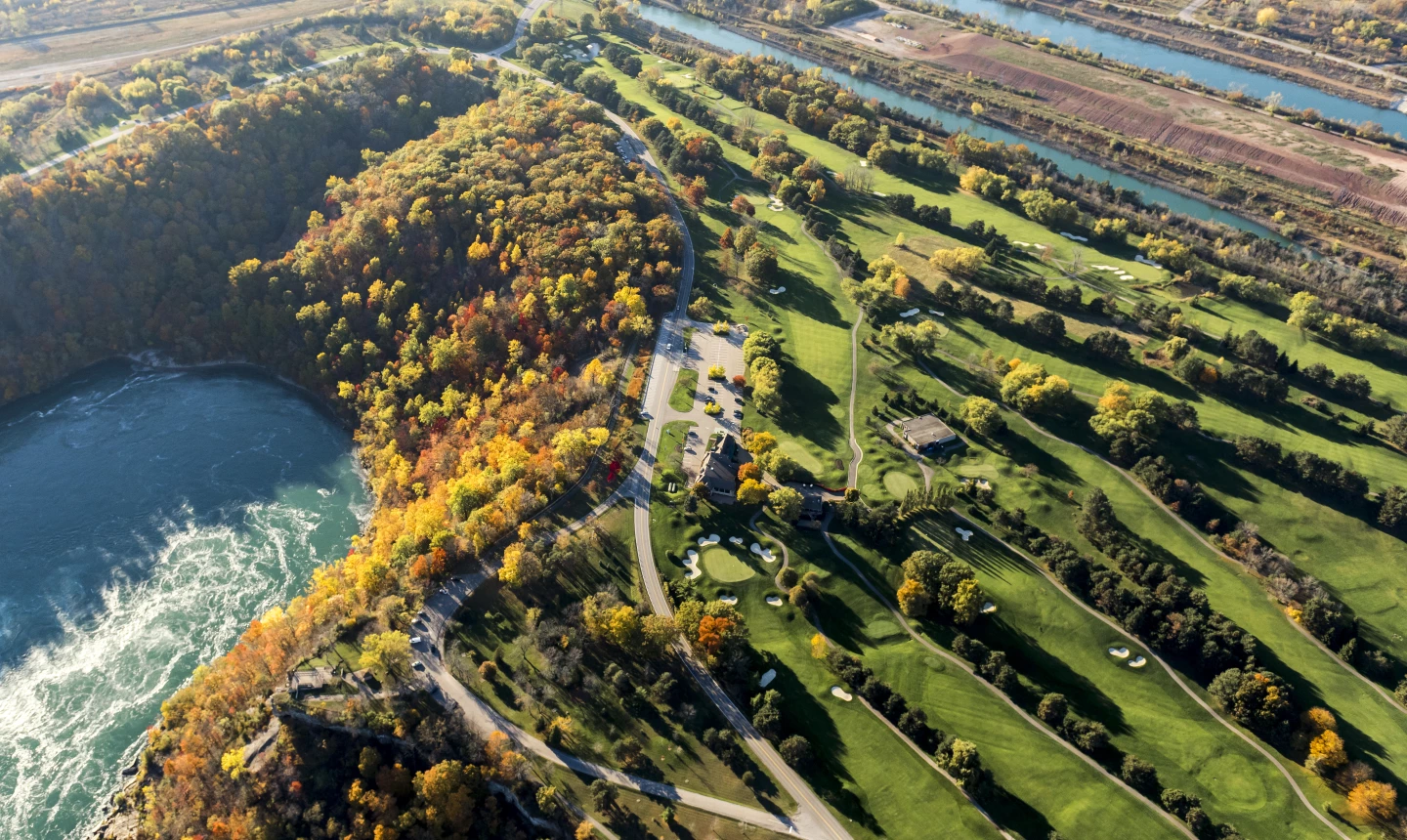













I despise articles like this which promises to tell you how you can "stretch" your golf budget, but in actual fact it only give exchange rates... Wouldn't an article which actually tells you how to save a few $'s by renting golf clubs rather then paying for the additional baggage charges make more sense? At least someone will get something out of it... Anyone can look up the current and past exchange rates. Lazy journalism Bill, just lazy. Rather rename the article as "What is the current dollar exchange rate in golfing countries", then people like me won't be mislead into thinking that they've found a truly helpful article. Thanks Bill!